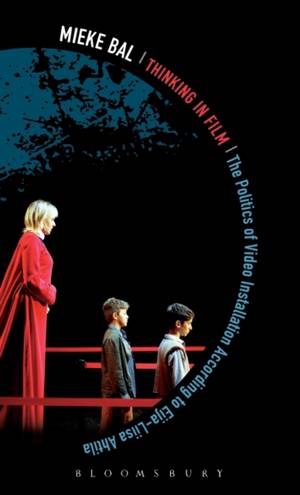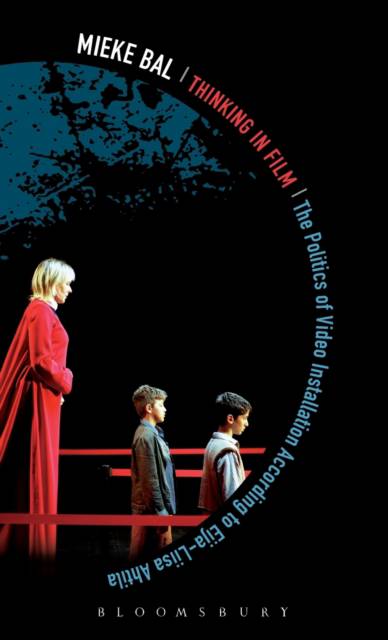
Bedankt voor het vertrouwen het afgelopen jaar! Om jou te bedanken bieden we GRATIS verzending (in België) aan op alles gedurende de hele maand januari.
- Afhalen na 1 uur in een winkel met voorraad
- In januari gratis thuislevering in België
- Ruim aanbod met 7 miljoen producten
Bedankt voor het vertrouwen het afgelopen jaar! Om jou te bedanken bieden we GRATIS verzending (in België) aan op alles gedurende de hele maand januari.
- Afhalen na 1 uur in een winkel met voorraad
- In januari gratis thuislevering in België
- Ruim aanbod met 7 miljoen producten
Zoeken
Thinking in Film
The Politics of Video Art Installation According to Eija-Liisa Ahtila
Mieke Bal
Hardcover | Engels
€ 220,45
+ 440 punten
Uitvoering
Omschrijving
What is a moving image, and how does it move us? In Thinking In Film, celebrated theorist Mieke Bal engages in an exploration - part dialogue, part voyage - with the video installations of Finnish artist Eija-Liisa Ahtila to understand movement as artistic practice and as affect. Through fifteen years of Ahtila's practice, including such seminal works as The Annunciation, Where Is Where? and The House, Bal searches for the places where theoretical and artistic practices intersect, to create radical spaces in which genuinely democratic acts are performed. Bringing together different understandings of 'figure' from form to character, Bal examines the syntax of the exhibition and its ability to bring together installations, the work itself, the physical and ontological thresholds of the installation space and the use of narrative and genre. The double meaning of 'movement', in Bal's unique thought, catalyses anunderstanding of video installation work as inherently plural, heterogenous and possessed of revolutionary political potential. The video image as an art form illuminates the question of what an image is, and the installation binds viewers to their own interactions with the space. In this context Bal argues that the intersection between movement and space creates an openness to difference and doubt. By 'thinking in' art, we find ideas not illustrated by but actualized in artworks. Bal practices this theory in action to demonstrate how the video installation can move us to think beyond ordinary boundaries and venture into new spaces. There is no act more radical than figuring a vision of the 'other' as film allows artto do. Thinking In Film is Mieke Bal ather incisive, innovative best as she opens up the miraculous political potential of the condensed art of the moving image.
Specificaties
Betrokkenen
- Auteur(s):
- Uitgeverij:
Inhoud
- Aantal bladzijden:
- 328
- Taal:
- Engels
Eigenschappen
- Productcode (EAN):
- 9781472526915
- Verschijningsdatum:
- 15/08/2013
- Uitvoering:
- Hardcover
- Formaat:
- Genaaid
- Afmetingen:
- 147 mm x 224 mm
- Gewicht:
- 612 g

Alleen bij Standaard Boekhandel
+ 440 punten op je klantenkaart van Standaard Boekhandel
Beoordelingen
We publiceren alleen reviews die voldoen aan de voorwaarden voor reviews. Bekijk onze voorwaarden voor reviews.









